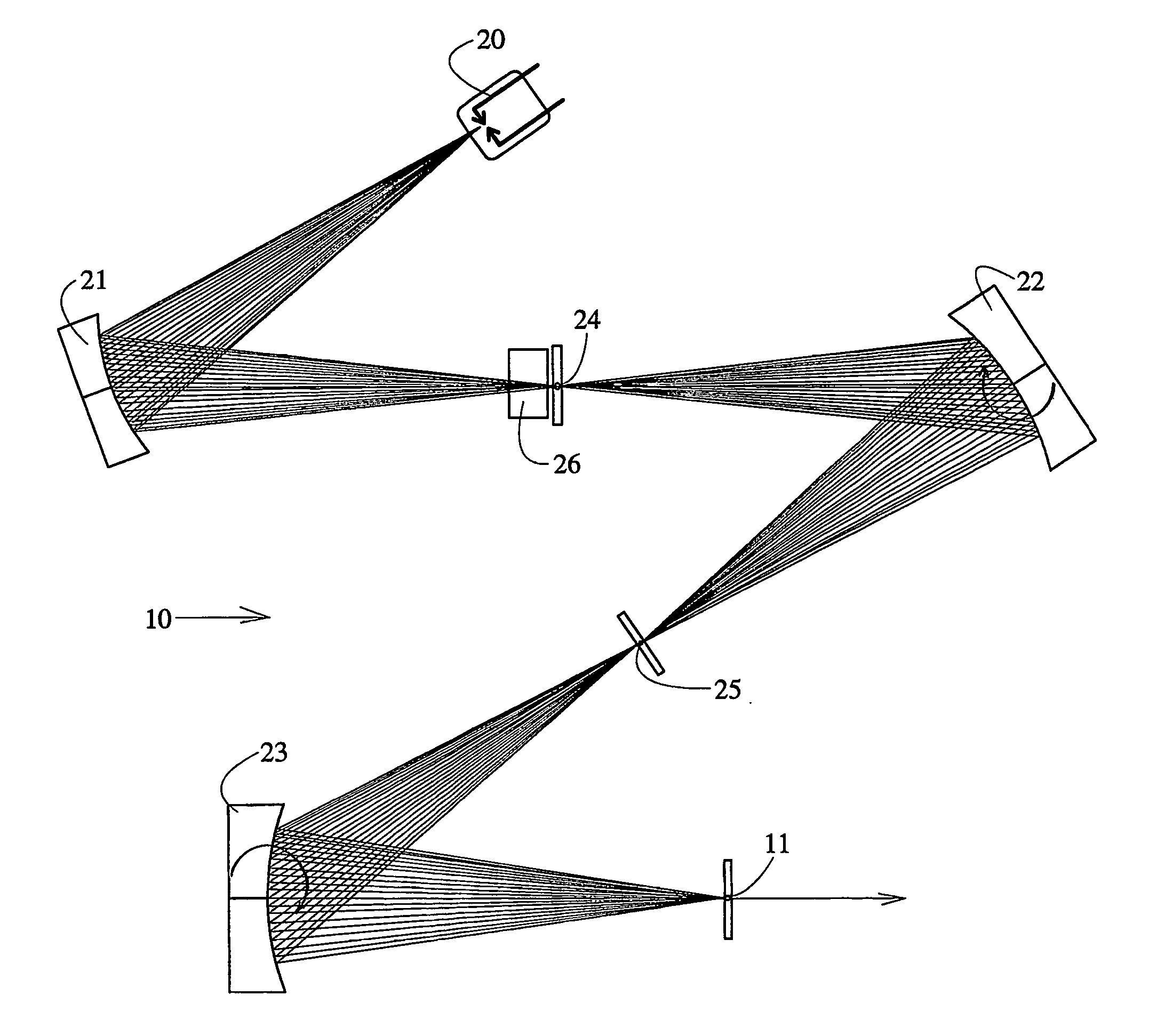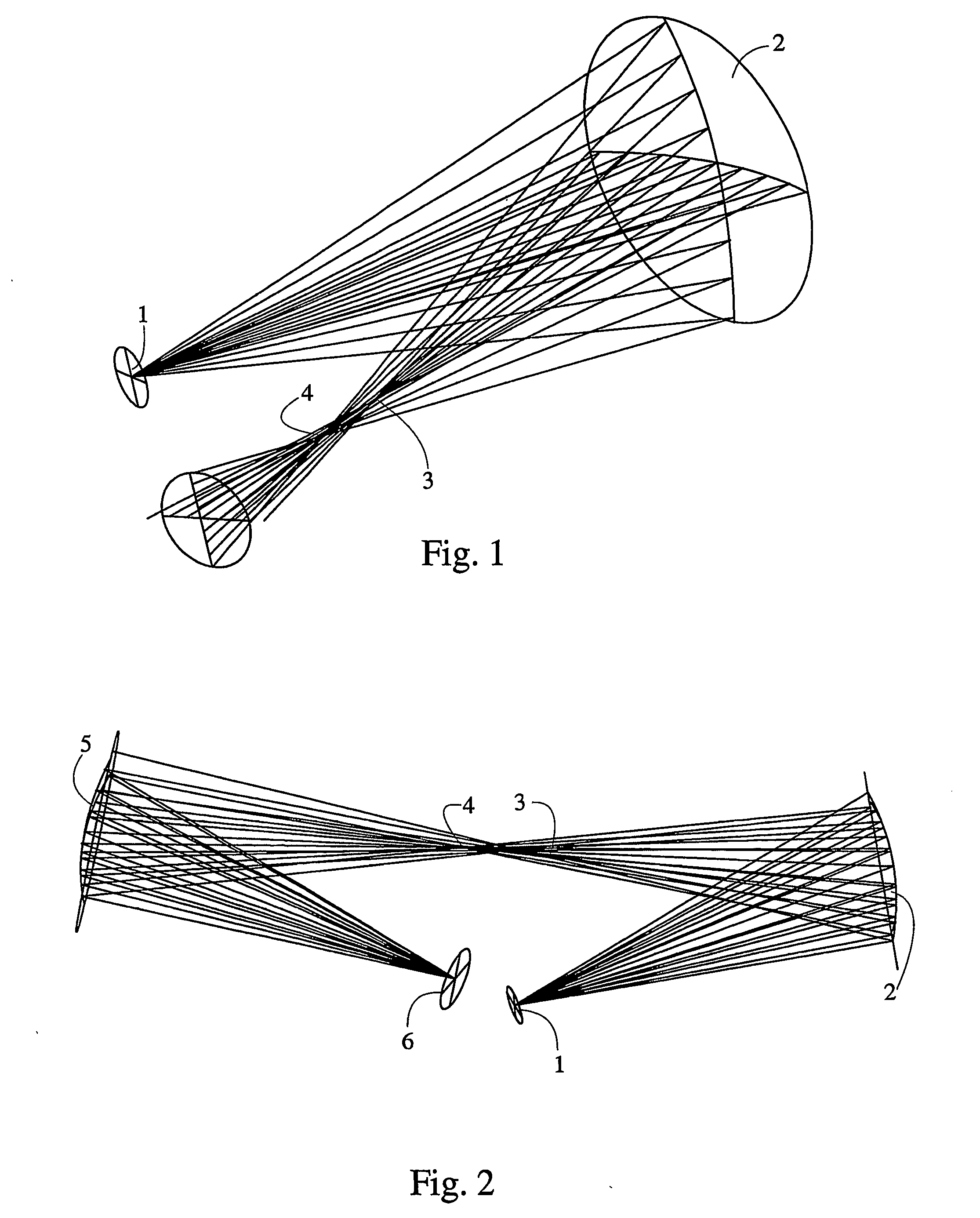Conduction and correction of a light beam
a light beam and light beam technology, applied in the field of curved optical refraction equipment, can solve the problems of undesirable damping, significant astigmatism, special astigmatism, etc., and achieve the effect of enhancing the measuring response, less optical signal, and avoiding problems caused by crosstalk from well to well
- Summary
- Abstract
- Description
- Claims
- Application Information
AI Technical Summary
Benefits of technology
Problems solved by technology
Method used
Image
Examples
Embodiment Construction
[0043] When an object to be imaged with a spherical mirror lies outside an optical axis, the result will be an astigmatic flaw as a point-like object is visualized as a line segment. The reason for this is that light beams emanating from an object in a variety of planes come to contact with a mirror at different angles, and thus are also reflected at different angles. The extreme cases are created by beams traveling in a plane defined by the point and the main axis (horizontal plane) and in a plane perpendicular thereto (vertical plane). The nearest will be the focus of a beam traveling in the horizontal plane and the farthest will be the focus of a beam traveling in the vertical plane.
[0044] FIG. 1 visualizes the development of astigmatism. An imaging object 1 is focused in the rotational plane (horizontal plane) of a concave spherical mirror 2 at a point 3. In vertical plane, the image shall develop further away at a focus 4, and the focus 3 will be visualized as a vertical line s...
PUM
 Login to View More
Login to View More Abstract
Description
Claims
Application Information
 Login to View More
Login to View More - R&D
- Intellectual Property
- Life Sciences
- Materials
- Tech Scout
- Unparalleled Data Quality
- Higher Quality Content
- 60% Fewer Hallucinations
Browse by: Latest US Patents, China's latest patents, Technical Efficacy Thesaurus, Application Domain, Technology Topic, Popular Technical Reports.
© 2025 PatSnap. All rights reserved.Legal|Privacy policy|Modern Slavery Act Transparency Statement|Sitemap|About US| Contact US: help@patsnap.com



